Please note, links to all the Freedom Essays are included at the end of this essay. Open any essay to read, print, download, share or listen to (as an audio).
Freedom Essay 21
How did we humans acquire our all-loving, unconditionally selfless moral conscience?
Written by Jeremy Griffith, 2017
The previous Freedom Essay 20 explained how our species’ guilt over our present human-condition-afflicted angry and egocentric behaviour led us to contrive the excuse that we have ‘savage’ competitive, selfish and aggressive instincts, despite clear evidence that we humans actually have cooperative, selfless and loving moral instincts, the ‘voice’ or expression of which is our conscience. As Charles Darwin recognised, ‘The moral sense perhaps affords the best and highest distinction between man and the lower animals’ (The Descent of Man, 1871, ch.4).
And to have acquired our altruistic moral instinctive nature, it follows that our distant ancestors must have been cooperative, selfless and loving, not competitive, selfish and aggressive like other animals—which the following extracts from F. Essay 53 serve to illustrate (and you can find many more wonderful descriptions like these of our species’ past time in innocence in that essay).
- In 360 BC Plato, the greatest of all philosophers, wrote of ‘our state of innocence, before we had any experience of evils to come, when we were…simple and calm and happy…pure ourselves and not yet enshrined in that living tomb which we carry about, now that we are imprisoned’, a time when we lived a ‘blessed and spontaneous life…[where] neither was there any violence, or devouring of one another [no sex as humans practice it now], or war or quarrel among them…And they dwelt naked, and mostly in the open air…and they had no beds, but lay on soft couches of grass’ (see pars 158 & 170 of FREEDOM for source).
- In his poem Works and Days, Plato’s Greek compatriot Hesiod, some 400 years before Plato, wrote of our distant ancestors that ‘When gods alike and mortals rose to birth / A golden race the immortals formed on earth…Like gods they lived, with calm untroubled mind / Free from the toils and anguish of our kind…Strangers to ill, their lives in feasts flowed by…They with abundant goods ‘midst quiet lands / All willing shared the gathering of their hands’ (par. 180).
- The author Richard Heinberg states in his book, Memories & Visions of Paradise that all mythologies acknowledge a time of togetherness before the emergence of the human condition: ‘Every religion begins with the recognition that human consciousness has been separated from the divine Source, that a former sense of oneness…has been lost…everywhere in religion and myth there is an acknowledgment that we have departed from an original…innocence and can return to it only through the resolution of some profound inner discord’ (par. 181).
- And finally, the philosopher Jean-Jacques Rousseau wrote that even with regard to some humans living today, ‘nothing is more gentle than man in his primitive state’ (par. 181).
The great biological question this leaves screaming out to be answered is, if all this evidence is true—that, as Darwin recognised, we have inherited altruistic, unconditionally selfless, cooperative and loving moral instincts from our distant ancestors, then how could our ancestors possibly have developed them? Indeed, this question of how we humans acquired our moral instinctive self or soul has been one of the great outstanding biological questions: Darwin described altruism as the ‘one special difficulty’ with natural selection (On The Origin of Species, 1859, p.209 of 440), and more recently, primatologist Richard Wrangham described it as ‘A question that has lain unsolved at the core of biology ever since Darwin’ (in a review of E.O. Wilson’s 2019 book Genesis: The Deep Origin of Societies). And the reason it has been such a huge question for us biologists is because we know that genes normally cannot select for unconditionally selfless, fully cooperative traits simply because such traits tend to be self-eliminating and so normally can’t become established in a species—‘By all means, you can be selfless towards me and sacrifice your genes for me, but I’m not about to be selfless towards you and sacrifice my genes for you.’ The process of natural selection dictates that selfish opportunism will supposedly always exploit selflessness. So how could such a selfish process possibly have created such loving selflessness in us?
As explained in chapter 5 of FREEDOM, the answer was through nurturing (which, interestingly, Blake’s illustration for Hesiod’s Works and Days, included above, intimates).
To explain what is so significant about a mother’s nurturing of her offspring, I first need to point out that a mother’s maternal instinct to care for her offspring is selfish because she is ensuring the reproduction of her genes by looking after her offspring who carry her genes. So maternalism is a selfish trait, which, as I’ve just said, genetic traits normally have to be for them to reproduce and carry on into the next generation. HOWEVER, and this is all-important, from the infant’s perspective maternalism does have the appearance of being selfless. From the infant’s perspective, it is being treated unconditionally selflessly—the mother is giving her offspring food, warmth, shelter, support and protection for apparently nothing in return. So it follows that if the infant can remain in infancy for an extended period and be treated with a lot of seemingly altruistic love, it will be indoctrinated with that selfless love and grow up to behave accordingly—and over many generations that behaviour will become instinctive because genetic selection will inevitably follow and reinforce any development process occurring in a species; the difficulty was in getting the development of unconditional selflessness to occur in the first place, for once it was regularly occurring it would naturally become instinctive over time.
And if we think about primates, being semi-upright from living in trees, and thus having their arms free to hold a dependent infant, it’s clear that they are especially facilitated to support and prolong the mother-infant relationship, and so develop this nurtured, loving, cooperative behaviour. So it was through this ‘love-indoctrination’ process that our primate ancestors developed our moral conscience.
Bonobo mothers holding their infants
The bonobo, the species of great ape that lives south of the Congo river in Africa, is the most cooperative, selfless and loving of all non-human primates, and they are extraordinarily focused on nurturing their infants, as this quote evidences: ‘Bonobo life is centered around the offspring. Unlike what happens among chimpanzees, all members of the bonobo social group help with infant care and share food with infants. If you are a bonobo infant, you can do no wrong…Bonobo females and their infants form the core of the group’ (Sue Savage-Rumbaugh & Roger Lewin, Kanzi: The Ape at the Brink of the Human Mind, 1994, p.108 of 299).
These photographs illustrate just how nurturing bonobos are.
As to how cooperative, selfless and loving bonobos are, the following quotes (which are all referred to in chapter 5 of FREEDOM) provide powerful evidence. Firstly, from filmmakers who were producing a documentary about them: ‘they’re surely the most fascinating animals on the planet. They’re the closest animals to man [in that they share 99 percent of our genetic make-up]…Once I got hit on the head with a branch that had a bonobo on it. I sat down and the bonobo noticed I was in a difficult situation and came and took me by the hand and moved my hair back, like they do. So they live on compassion, and that’s really interesting to experience’ (accompanying film discussing the production of the French documentary Bonobos, 2011).
Yes, as bonobo zoo keeper Barbara Bell said, ‘Adult bonobos demonstrate tremendous compassion for each other…For example, Kitty, the eldest female, is completely blind and hard of hearing. Sometimes she gets lost and confused. They’ll just pick her up and take her to where she needs to go’ (Chicago Tribune, 11 Jun. 1998). Bonobos’ unlimited capacity for love is also apparent in this wonderful first-hand account from bonobo researcher Vanessa Woods: ‘Bonobo love is like a laser beam. They stop. They stare at you as though they have been waiting their whole lives for you to walk into their jungle. And then they love you with such helpless abandon that you love them back. You have to love them back’ (The Guardian, 1 Oct. 2015). (You can watch some exquisite footage of the nurtured peace in bonobo society that was filmed during Jeremy’s 2014 visit with Professor Harry Prosen to the bonobos at the Milwaukee County Zoo.)
The consequences of this nurturing of unconditional love in bonobos is apparent in this report from researchers: ‘bonobos historically have existed in a stable environment rich in sources of food…and unlike chimpanzees have developed a more cohesive social structure’ (Takayoshi Kano & Mbangi Mulavwa, ‘Feeding ecology of the pygmy chimpanzees (Pan paniscus)’; The Pygmy Chimpanzee, ed. Randall Susman, 1984, p.271 of 435). For example: ‘up to 100 bonobos at a time from several groups spend their night together. That would not be possible with chimpanzees because there would be brutal fighting between rival groups’ (Paul Raffaele, ‘Bonobos: The apes who make love, not war’, Last Tribes on Earth.com, 2003; see www.wtmsources.com/143).
The above picture of a group of bonobos resting in a grassy glade perfectly equates with the description that Plato gave earlier about what life was like for humans back in the ‘Golden Age’ of nurtured togetherness: ‘And they dwelt naked, and mostly in the open air…and they had no beds, but lay on soft couches of grass’. Clearly we have a perfect instinctive memory (if we don’t choose to deny it) of what life was like before ‘the fall’ because Plato didn’t know of the existence of bonobos and yet instinctively knew exactly what our bonobo-like life before ‘the fall’ was like.
It might be mentioned that (as explained in F. Essay 24 and chapter 7 of FREEDOM, and briefly summarised two paragraphs below) another consequence of our ape ancestors having been nurtured with unconditional selflessness or love is that that orientation to love liberated the development of a fully conscious mind, which this further quote from Barbara Bell evidences is emerging in bonobos: ‘They’re extremely intelligent…They understand a couple of hundred words…It’s like being with 9 two and a half year olds all day’ and ‘They also love to tease me a lot…Like during training, if I were to ask for their left foot, they’ll give me their right, and laugh and laugh and laugh.’
The following extraordinary video of the famed animal photographer Joel Sartore photographing the bonobo Kanzi, reveals just how conscious bonobos are. Note how, just like a human 2-year-old, Kanzi loves to play, and how happy and excited he is, and also how well-behaved he is, a behaviour that is no longer common in human-condition-traumatised human children of today:
Make and see comments here
(With regard to the question of how we humans became conscious, and why bonobos are well on their way to becoming fully conscious, the following is a brief summary of the full explanation, which, as mentioned, you can read in F. Essay 24 and chapter 7 of FREEDOM. [And I should mention that, like the origin of the human condition, and how we acquired our moral nature, and the meaning of existence, the question of the origin of humans’ fully conscious mind is one of the great outstanding mysteries in science that a truthful analysis of the human condition finally makes it possible to explain.] It was the nurturing, love-indoctrination process that enabled consciousness to emerge because while a mother’s nurturing of her infants enabled unconditionally selfless behaviour to develop and, over time, become instinctual, this training in unconditional selflessness produced a further accidental by-product, it produced brains trained to think selflessly and thus truthfully and thus effectively and thus become ‘conscious’ of the relationship of events that occur through time. Other species that can’t develop love-indoctrination and thus unconditional selflessness can’t think truthfully and thus effectively because unconditional selflessness, which they are unable to develop an orientation to, is the truthful, integrative theme or meaning of existence—the teleological, holistic, order-of-matter-developing, integrative, unconditional-selflessness-themed physical law of Negative Entropy that we live under, which we have personified as ‘God’, will be explained shortly in F. Essay 23. The fact is you can’t hope to think truthfully and thus effectively if you’re lying. Species whose behaviour is governed by genetic selfishness have emerging minds that are, in effect, dishonestly orientated; their minds are alienated from the truth. Such species won’t, in fact, allow selflessness-recognising, truthful and thus effective thinking, which means they can never make sense of experience and thus never become conscious. What all this means is that the human mind has been alienated from the truth twice in its history: firstly, in our pre-love-indoctrinated past when, like all other animals—except now for bonobos, who have almost completed the process of love-indoctrination—our brains were blocked from thinking truthfully; and, secondly, in our present state, where our minds have been alienated from the truth as a result of our fearful denial of the human condition.)
All the descriptions of bonobos included earlier (and you can read many more in chapter 5 of FREEDOM) provide powerful insights into how extraordinarily cooperative, selfless and loving bonobos, our closest living relative, are. In fact, the following picture shows just how similar our species are, comparing as it does the skeleton of our early australopithecine ancestor (who lived between 3.9 and 3 million years ago) with the skeleton of a bonobo. The truth is that our ancestors are far more similar to bonobos with regard to their size, their bipedality, environment, lack of large canines, and lack of size differentiation between males and females, than any other existing primate—which indicates that our ancestors followed a similar path of development to the bonobos. So the evidence is that it was through the nurturing, love-indoctrination process that we acquired our altruistic moral nature.
Left side: Bonobo skeleton. Right side: Early australopithecine.
(Drawing by Adrienne L. Zihlman from New Scientist, 1984)
Indeed, the recent astonishing fossil discoveries, particularly those of the 4.5 million year old Ardipithecus that revealed these similarities between our ancestors and bonobos, have led the leading anthropologist C. Owen Lovejoy to acknowledge that ‘our species-defining cooperative mutualism can now be seen to extend well beyond the deepest Pliocene [well beyond 5.3 million years ago]’ (‘Reexamining Human Origins in Light of Ardipithecus ramidus’, Science, 2009, Vol.326, No.5949). (Much more can be read in the next F. Essay 22 about the insights being gleaned from the fossil record.)
Artist’s reconstruction of the 4.4 mya Ardipithecus ramidus in its natural habitat
(Painting by paleoartist Jay H. Matternes)
Although bonobos and the fossil record are only now revealing their corroborating evidence, the nurturing, love-indoctrination explanation for our extraordinary unconditionally selfless, all-loving, social, moral instinctive self or soul is in fact so obvious that only three years after Darwin tentatively ascribed the origin of our ‘social instinct’ to ‘parental’ ‘affections’ (The Descent of Man, 1871, ch.4), it was put forward as a developed theory by the philosopher John Fiske in his 1874 book, Outlines of Cosmic Philosophy: based on the Doctrine of Evolution.
The outstanding question therefore is, why did Fiske’s nurturing explanation for the origins of our moral instincts—that was described at the time as being ‘far more important’ than ‘Darwin’s principle of natural selection’ (Dorothy Ross, G. Stanley Hall: The Psychologist as Prophet, 1972, p.262 of 482) and ‘one of the most beautiful contributions ever made to the Evolution of Man’ (John Drummond, The Ascent of Man, 1894, ch. ‘The Evolution of a Mother’), and resulted in Darwin himself writing to Fiske saying, ‘I never in my life read so lucid an expositor (and therefore thinker) as you are’ (1874; Life and Letters of Charles Darwin, Vol. 2)—virtually vanish from scientific discourse? (You can read much more about Fiske’s theory in chapter 6:3 of FREEDOM.)
The answer is that this nurturing explanation has been an unbearably confronting truth for parents trying to nurture their children adequately under the extreme duress of the human condition—a competitive, selfish and aggressive state that developed when humans became fully conscious after this time when we lived cooperatively and lovingly in the metaphorical ‘Garden of Eden’ state of original innocence. Our present insecurity about our inability to adequately nurture our children is painfully apparent in this quote from the bestselling children’s author, John Marsden: ‘The biggest crime you can commit in our society is to be a failure as a parent and people would rather admit to being an axe murderer than being a bad father or mother’ (Sunday Life, The Sun-Herald, 7 Jul. 2002).
It is ONLY NOW that we can explain the competitive, selfish and aggressive upset state of the human condition and thus understand why the present human-condition-afflicted human race hasn’t been able to adequately nurture our infants that it becomes safe to finally admit that nurturing is what made us human—that it was nurturing that gave us our moral soul and created humanity.
Again, this nurturing explanation of humans’ moral instincts is presented in full in chapter 5 of FREEDOM. And you can watch Jeremy Griffith present the breakthrough redeeming biological explanation of why we became competitive, selfish and aggressive sufferers of the human condition when our conscious mind developed in THE Interview; and for a fuller explanation read chapter 3 of FREEDOM; and for a summary presentation of the key ‘instinct vs intellect’ explanation watch Video/F. Essay 3.
- - - - - - - - - - - - - - - - - -
Discussion or comment on this essay is welcomed—see below.
Please Note, if you are online you can read, print, download or listen to (as a podcast) THE Interview, The Great Guilt, The Great Transformation, Sermon On The Beach or any of the following Freedom Essays by clicking on them, or you can find them all at www.humancondition.com.
INTRODUCTION TO THE EXPLANATION & RESOLUTION OF THE HUMAN CONDITION: THE Interview That Solves The Human Condition And Saves The World! | The Great Guilt that causes the Deaf Effect | The Great Transformation: How understanding the human condition actually transforms the human race | Sermon On The Beach | Freedom Essay 1 Your block to the most wonderful of all gifts | 2 The false ‘savage instincts’ excuse | 3 THE EXPLANATION of the human condition | 4 The ‘instinct vs intellect’ explanation is obvious – short | 5 The transformation of the human race | 6 Wonderfully illuminating interview | 7 Praise from Prof. Prosen | 8 “How this ends racism forever” | 9 “This is the real liberation of women” | 10 What exactly is the human condition? | 11 The difficulty of reading FREEDOM and the solution | 12 One hour summarising talk | 13 The WTM Deaf Effect Course | 14 Dishonest biology leads to human extinction | 15 How your life can immediately be transformed | 16 The Shock Of Change | THE BOOKS: 17 Commendations & WTM Centres | 18 FREEDOM chapter synopses | 19 FREEDOM’s significance by Prof. Prosen | 20 The genius of Transform Your Life | THE OTHER KEY BIOLOGICAL EXPLANATIONS: 21 How did we humans acquire our altruistic moral conscience? | 22 Fossil discoveries evidence our nurtured origins | 23 Integrative Meaning or ‘God’ | 24 How did consciousness emerge in humans? | 25 The truthful biology of life | • Survey seeking feedback | MEN & WOMEN RECONCILED: 26 Men and women reconciled | 27 Human sex and relationships explained | THE END OF RACISM: 28 The end of racism | 29 Can conflict ever end? | RESIGNATION: 30 Resignation | 31 Wordsworth’s all-revealing great poem | MORE ON THE TRANSFORMATION: 32 More on the Transformation | 33 Jeremy on how to become transformed | THE END OF POLITICS: 34 This understanding ends the polarised world of politics | 35 Death by Dogma left-wing threat | 36 Saving Western civilisation from left-wing dogma | 37 The meaning of superhero and disaster films | RELIGION DECIPHERED: 38 Noah’s Ark explained | 39 Christ explained | 40 Judgment Day finally explained | 41 Science’s scorn of religion | MEANING OF ART & CULTURE: 42 Cave paintings | 43 Ceremonial masks explained | 44 Art makes the invisible visible | • Second survey seeking feedback | 45 Prophetic songs | 46 Anne Frank’s faith in human goodness fulfilled | 47 Humour and swearing explained | 48 R.D. Laing’s fearless honesty | ABOUT BIOLOGIST JEREMY GRIFFITH: 49 Jeremy’s biography | 50 Australia’s role | 51 Sir Laurens van der Post’s fabulous vision | 52 Jeremy’s children’s book A Perfect Life | 53 The ‘instinct vs intellect’ explanation is obvious – long | 54 The accusation of hubris | DO WE FAIL OR DO WE MAKE IT? 55 Endgame for the human race | 56 Why there have been ferocious attacks on the WTM | 57 Magnificence of the Transformed State – video 1 | 58 Magnificence of the Transformed State – video 2 | MARKETING: 59 Shouldn’t the WTM’s website be toned down? | 60 The crime of ‘ships at sea’ ‘pocketing the win’ | GENERAL DISCUSSIONS BY JEREMY: 61 General Discussion by Jeremy Aug. 2018 | 62 Jeremy’s Masterpiece Presentation Feb. 2019 | HEALTH & HEALING: 63 Pseudo therapy/healing | 64 Real therapy/healing | From here on are Transformation Affirmations and More Good Info Emails
These essays were created in 2017-2024 by Jeremy Griffith, Damon Isherwood, Fiona
Cullen-Ward, Brony FitzGerald & Lee Jones of the Sydney WTM Centre. All filming and
editing of the videos was carried out by Sydney WTM members James Press & Tess Watson
during 2017-2024. Other members of the Sydney WTM Centre are responsible for the
distribution and marketing of the videos/essays, and for providing subscriber support.

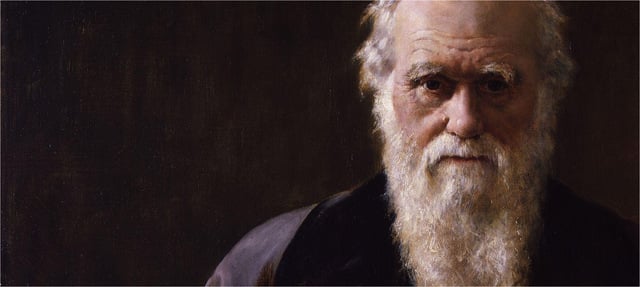
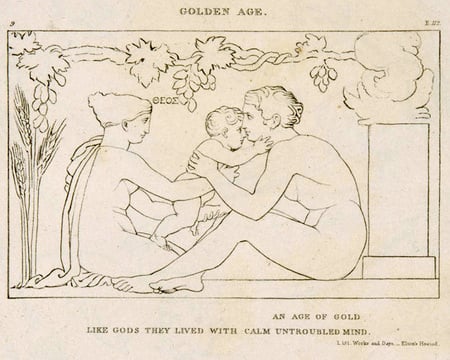
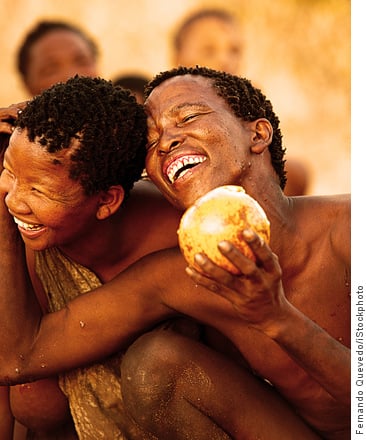
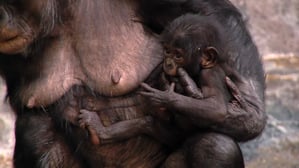
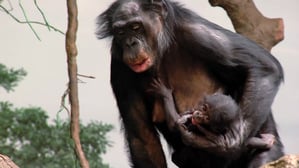
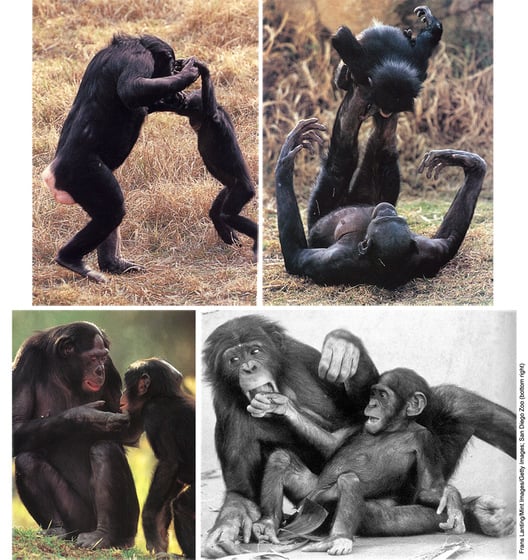
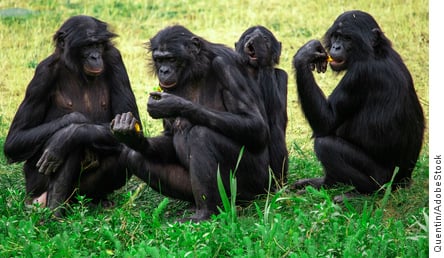
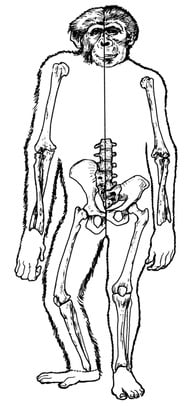
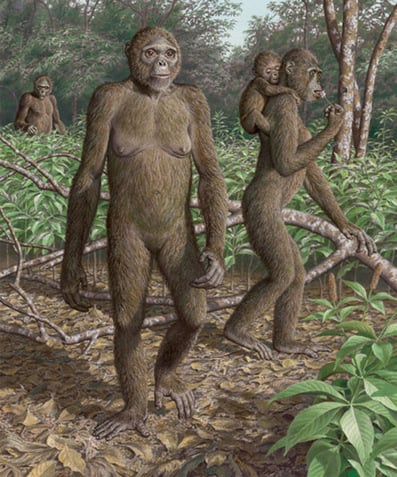

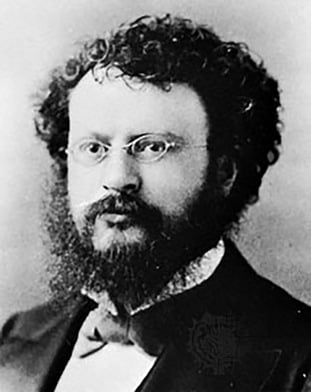
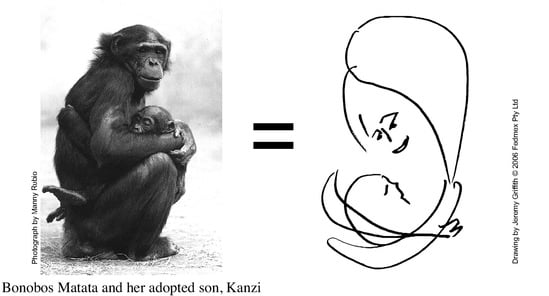

Please wait while the comments load...
Comments